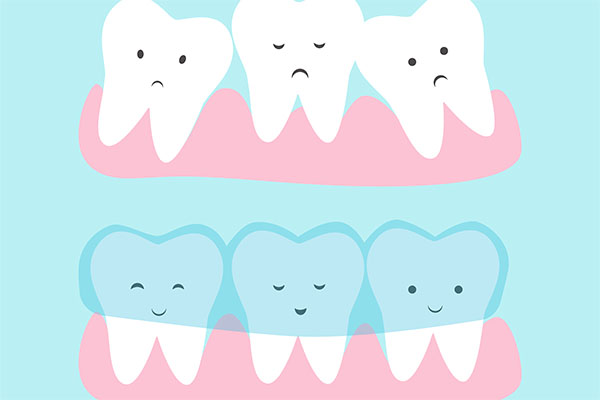Considering the Pros and Cons of Dental Crowns
 A dental crown can help to fix a variety of dental issues like chipped, cracked, broken, decayed, or deformed teeth. The crown covers up the visible part of the tooth and restores its function. Getting a dental crown placed on a tooth typically involves two trips to the dentist. The first is used to prepare the patient’s teeth for the restoration, and their custom crown is cemented into place during the second visit.
A dental crown can help to fix a variety of dental issues like chipped, cracked, broken, decayed, or deformed teeth. The crown covers up the visible part of the tooth and restores its function. Getting a dental crown placed on a tooth typically involves two trips to the dentist. The first is used to prepare the patient’s teeth for the restoration, and their custom crown is cemented into place during the second visit.
The benefits and disadvantages of getting a dental crown
Dental crowns are versatile restorations that are often combined with other oral prosthetics like dental bridges and implants. Some of the benefits of using crowns to address dental issues include:
- Crowns can be made from a wide range of materials, giving patients lots of options. Some of the more common materials used to make crowns include porcelain, stainless steel, and gold
- Crowns provide a long-term solution to issues they are used to fix. A crown can last up to 25 years with good oral hygiene
- Dental crowns give patients natural-looking results. It is virtually impossible to determine if a porcelain crown is real or not. Crowns are only visible in the mouth when made from materials that cannot be color-matched with the patient’s teeth
- Crowns are made from biocompatible materials so patients do not have to worry about having adverse reactions
- Crowns restore the function of teeth they cover. They are designed to be able to deal with the forces generated when chewing
- Crowns hold the remaining part of a tooth together, preventing the tooth from breaking apart further. They can be used to save severely decayed or damaged teeth because of this
- Crowns do not require any form of specialized care. Good oral hygiene is all patients need to get the most out of their restoration
The few drawbacks associated with restoring teeth with crowns include:
- Crowns cost more than other options like rebuilding a tooth with composite bonding
- Enamel typically needs to be removed from the tooth being treated. This is a permanent alteration that can never be reversed. The tooth will always need a restoration to protect the dentin moving forward
- Getting a crown placed on a tooth can lead to increased teeth sensitivity. This typically goes away after a few days
- Crowns are not as durable as real teeth. They can handle most foods, but dentists advise against eating hard foods like ice with them
The process
Getting a crown starts with the dentist injecting the patient with an anesthetic so they do not feel pain as enamel is shaved off. An impression of the prepared tooth is taken and forwarded to a lab where crowns are made. The patient gets a temporary crown to complete the first visit. During a second appointment, the temporary crown is replaced with a customized crown.
Repair your tooth with a crown
Need to fix a damaged or deformed tooth? Give us a call or visit our Cumming clinic to set up an appointment with our dentist.
Request an appointment or call Cumming's Family Dentist at 770-205-9226 for an appointment in our Cumming office.
Recent Posts
A dental crown is a type of dental restoration that is used to avoid additional damage to a tooth’s surface after it breaks, chips, or fractures. Dental crowns are caps that are cemented over broken teeth to preserve their function, form, and appearance. The materials for the dental crown can be metals, ceramics, porcelain, or…
The cosmetic appeal of dental crowns rests on their ability to sheathe natural teeth. A dental crown is also a custom restoration, meaning that it fits the underlying tooth like a glove. It covers the visible part of the tooth, from the biting surface to the base.These qualities make a dental cap one of the…
A dental crown is a type of dental restoration that covers a damaged or weakened tooth and improves its size, shape, health, and appearance. There are certain signs a dentist may look for to determine whether a dental crown is the best form of restoration for a patient or if another restoration may be more…


